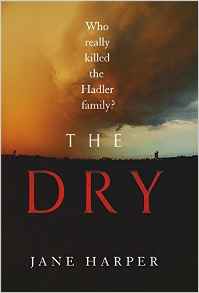Published by
Mulholland Books,
28 July 2016.
ISBN: 978-1-473-60833-7(HB)
28 July 2016.
ISBN: 978-1-473-60833-7(HB)
One of the conventions of popular fiction in any genre is a character
with whom the reader can connect: either someone to root for and want to
succeed, or alternatively a rotter we love to hate and are glad to see come a
cropper.
The latter is not unusual in
a psychological thriller, and Paul Morris, protagonist of this artfully pitched
example, falls firmly into that camp right from the opening chapter. His
skilfully pitched first-person voice marks him out as pretentious,
self-regarding and self-pitying, an unapologetic womanizer and an adept
scrounger; these and other flaws suggest from the outset that he is riding for
a fall.
But that doesn’t stop Sabine
Durrant from lulling the reader into a sense of Paul’s impermeability: his
talent for taking people in and (metaphorically) getting away with murder
percolates three-quarters of the narrative. Broke and about to be homeless, he
worms his way into the home, bed and life of human rights lawyer Alice, his
machinations culminating in an invitation to join her group of friends on their
annual holiday in Greece. And that’s where (minor spoiler alert!) it all starts
to go horribly wrong...
Not that that should be
unexpected; it is a thriller, after all. And not at first; for quite a few
chapters, we could be observing an ordinary, scratchy family holiday, if it
wasn’t for a ten-year-old murder and a more recent rape lurking in the background.
And if Paul is dislikeable, Andrew, another member of the holiday party, is
even more so. Add in a clutch of teenage kids of varying degrees of
obnoxiousness; and the handful of other characters, equally well drawn and
adroitly placed for the best effect, don’t exactly set out to win the reader’s
sympathy. Only Alice herself and Tina are people we can warm to – and the fact
that I never wanted to stop reading about them all showed me that this talented
author knows exactly what she’s doing.
All of the above, plus a
tense build-up with plenty of elliptical clues, a superbly drawn background on
the Greek island (and also back home in middle-class London at first) and a
satisfyingly oblique ending that leaves you wondering: what more does a fan of
psychological thrillers need? Lie With Me was the first novel of Sabine
Durrant’s I had read; I’ll certainly be looking for more of her work.
------
Reviewer: Lynne Patrick
Sabine Durrant is a journalist and the author of the best-selling Having it and Eating It and the Connie
Pickles series of children's books. Her first psychological suspense novel, Under Your Skin, was published by Hodder
in the UK and Simon & Schuster in the US in 2014. Her second, Remember Me This Way, was also published
by Hodder in the UK and Simon & Schuster in the US in 2015. Both novels
have been translated into more than 15 languages. Her third novel, Lie With Me, comes out in hardcover in
Summer 2016. Sabine has written for the
Guardian, Observer, Sunday Times and Sunday Telegraph. She lives in south
London with her partner, the writer Giles Smith, and their three children.
Lynne Patrick has been a writer ever since she could pick up a pen,
and has enjoyed success with short stories, reviews and feature journalism, but
never, alas, with a novel. She crossed to the dark side to become a publisher
for a few years, and is proud to have launched several careers which are now
burgeoning. She lives on the edge of rural Derbyshire in a house groaning with
books, about half of them crime fiction.










